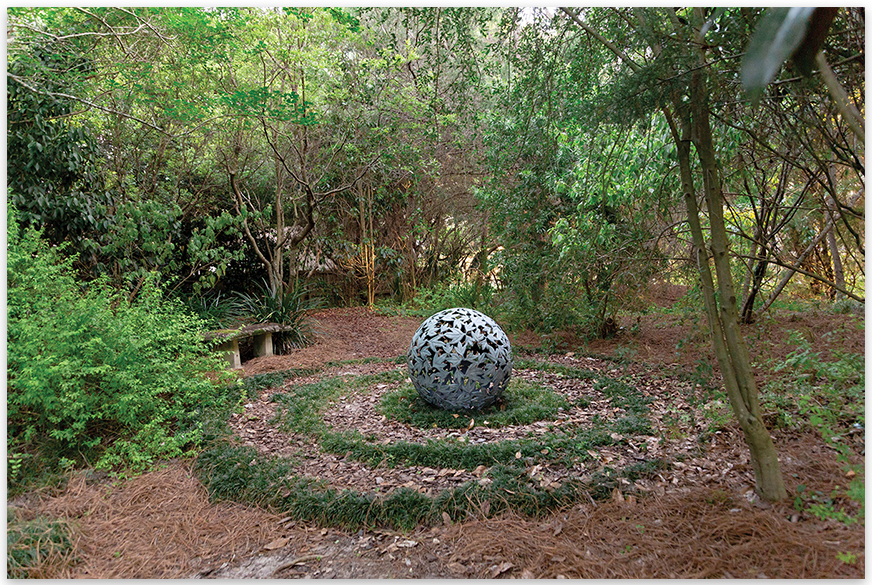
WISE CHOICE: Susan wanted a bit of elevation change and was concerned about flooding, so Angell designed a hill that features a swale to catch excess rainwater. At the top, Susan used mondo grass to form the shape of a nautilus—a marine mollusk associated with the growth of personal knowledge.
Doing the most to nourish your soil—and the larger environment—can actually mean doing less
Susan McLeod Epstein recently formed the Regenerative Garden Group with friends Beverly Rivers and Kathy and Derek Wade so they could continue to educate themselves about regenerative practices. They hope to begin spreading the word to other home and professional gardeners—just informally, for now.
These methods go beyond sustainable gardening, seeking to improve soil health and the diversity of the microorganisms that operate underground. “Research shows that healthy soil can actually sequester carbon,” explains Susan. “On a large scale, this can lessen global warming.”
Regenerative gardening practices also save useful organic material from the landfill and create wildlife corridors, which allow animals and insects to move about. “All of this makes for stronger and more resilient plants and landscapes,” Susan says.
She and her cohorts encourage home gardeners to get started with these five steps:
❶ Reduce or eliminate your lawn. Living ground covers (such as ajuga and mondo grass) or native shrubs (from wax myrtle to beautyberry) are excellent options for replacing grass. The next best thing is to cover the ground with mulch—especially the leaves that fall from your own trees.
❷ Stop using pesticides, including insecticides, herbicides, fungicides, and chemical fertilizers. These chemicals destroy the natural microbiome in the soil, harm beneficial insects (which help keep the bad bugs in check), and lead to water pollution.
❸ Avoid disturbing the ground. Tilling and frequent digging breaks up the microscopic ecosystems that create healthy soil. Planting more perennials in place of annuals is a great way to do less shoveling.
❹ Start a compost pile. Rather than adding yard waste—such as plant trimmings, grass clippings, and leaves—to the landfill, keep it on your property. It’ll offer habitat to insects and invertebrates while breaking down into valuable food for your plants and nourishment for your soil.
❺ Increase plant diversity in your yard, particularly by adding more natives. Any locally owned garden center can point out plants to suit your growing conditions, but Roots and Shoots Nursery in West Ashley specializes in species native to the Lowcountry.